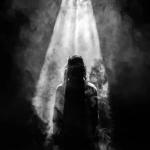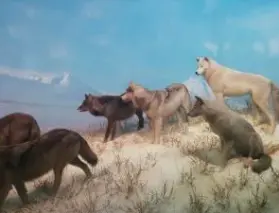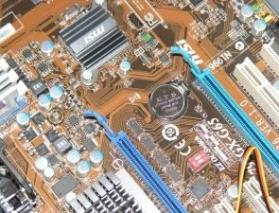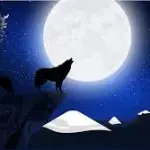 “Where could it be?” I asked myself as I tore my bedroom apart the other day. “It’s here. I know it is. I have to find it.” I was looking for a ring. I had purchased it twenty years ago in the gift shop of the Bru na Boinne Visitor Center, gateway to visiting Newgrange, a Neolithic passage tomb in County Meath, Ireland. The ring was made of silver, with a gold Celtic Triskele symbol embedded in its band. I felt a little guilty as I searched for it, as if the ring itself was going to chastise me upon its inevitable discovery for having neglected it for so long. You see, twenty years ago I went through an Irish adoration phase. Well, I guess it was far more than a phase; let’s call it an awakening. There was no explanation for it; I don’t have Irish ancestry, I don’t know anyone who is Irish, I just…love Ireland. The mythology, the music, the culture, the history…all of it. Something about it speaks to me on a spiritual level, though I am unable to pinpoint precisely what it is. I am sure that every reader of this has a song that makes you cry or gives you goosebumps, a story that inspires you, or a beautiful memory that kindles a desire to return to the place where it was first forged. I have those things too—and they are almost all associated with Ireland.
“Where could it be?” I asked myself as I tore my bedroom apart the other day. “It’s here. I know it is. I have to find it.” I was looking for a ring. I had purchased it twenty years ago in the gift shop of the Bru na Boinne Visitor Center, gateway to visiting Newgrange, a Neolithic passage tomb in County Meath, Ireland. The ring was made of silver, with a gold Celtic Triskele symbol embedded in its band. I felt a little guilty as I searched for it, as if the ring itself was going to chastise me upon its inevitable discovery for having neglected it for so long. You see, twenty years ago I went through an Irish adoration phase. Well, I guess it was far more than a phase; let’s call it an awakening. There was no explanation for it; I don’t have Irish ancestry, I don’t know anyone who is Irish, I just…love Ireland. The mythology, the music, the culture, the history…all of it. Something about it speaks to me on a spiritual level, though I am unable to pinpoint precisely what it is. I am sure that every reader of this has a song that makes you cry or gives you goosebumps, a story that inspires you, or a beautiful memory that kindles a desire to return to the place where it was first forged. I have those things too—and they are almost all associated with Ireland.
I found the ring after about half an hour of frantic room disassembly. In a small cardboard box, tucked far in the back of the top shelf of my closet, sat the long forgotten Newgrange band; it was nearly black with tarnish, almost unrecognizable. “There you are old boy,” I said, gingerly lifting it out of the box and rolling it gently between my fingers. Half an hour later, following an aggressive session with a tube of Metal-Glo, a used toothbrush, and a polishing cloth, it was back on my finger again, good as new. I looked down at the Triskele, and the meaning of its symbolism all came rushing back to me in a wave: “…one of the Celts’ most enduring and important symbols, it is based on the number three, symbolizing the threefold nature of life and the interconnectedness of all things. It resembles a complex labyrinth, and its spiraling nature, drawn using only one line, evokes the act of breathing, or the blood cycling in the veins and arteries of the body” (Taylor 128).
The gold representation embedded in the ring was a reproduction of the Triskele engraved on the stone that stands before the entrance to Newgrange. Looking down at the symbol reminded me of our 2001 visit to the monument; I recall watching in awe as the morning of the winter solstice is simulated for visitors, rays of the dawning sun passing through a small aperture known as the roofbox to illuminate the inner chamber. There is quite the waiting list to be in the chamber on the morning of the actual solstice, so sign up now. I remember marveling (and still do marvel) at the engineering skills required to design the monument so that morning illumination would be possible, let alone the herculean labor involved in constructing the monument itself from stones not native to the area that had to be hauled there. I’ll also never forget my embarrassment as my then two-year old son ran up and down the entrance passage of this ancient monument yelling “BIG TUNNEL!!” If you ever contemplate taking a two year old on a trip to Europe, please contact me before making any final decisions on that front; there are things we need to discuss.
Newgrange, the Hill of Tara—sites that today sit in the center of green, pastoral landscapes with the occasional cow wandering by—were sacred to the ancient Irish who lived around them, symbolically representing our interconnectedness with the forces of nature and with one another. I’ll not soon forget the sheer aura of history that seemed to rise up from the very ground as I listened to the wind in the trees dotting the countryside. Even to someone not native to the land, we know the sacrosanct when we encounter it.
In addition to the rediscovery of the ring and its symbolism, I have rediscovered two other aspects of Ireland that have fed my spirit over the years, one of them being Irish music. One of the most vivid memories I have of our first visit to Ireland was one special evening spent enjoying the performance of Ceoltoiri Kilkenny, a dance, music, and storytelling troupe recommended to us at the Kilkenny Chamber of Commerce. When my wife and I travel, we work particularly hard to immerse ourselves in the cultures we visit. The more money you spend, the larger the wall you can build between yourself and the culture you have come to see. We could all go to foreign countries but then eat the food and stay in accommodations that closely resemble what we left behind back home—but what would be the point? We are there to learn about the nation we are visiting and how they live, and to do so, you have to dive in and experience things outside your comfort zone.
When we were first exploring Kilkenny and visited the Chamber of Commerce there, we asked if there was any venue that would be performing traditional Irish music in the next couple of evenings. The person helping us mentioned the local group Ceoltoiri Kilkenny, who appeared to be exactly what we were looking for—Irish song, dance, and storytelling. Unfortunately, their first performance of their season wouldn’t be for a couple of weeks, and we would be well out of the area by then. “Wait a moment,” the man helping us said, “I’ll see what I can do.” He made a phone call or two, and then motioned us over to the counter with a sneaky little smile on his face. His tone dropped as if he were about to share a state secret, looking side to side to make sure no one else was in earshot. “Now,” he said softly, “their season doesn’t start for a couple of weeks, that’s true, but tonight is their first practice of the season. It’s about three blocks down, in the ballroom of an old hotel. They don’t really mind if they have an audience.” Boom. Irish music here we come!
We were two of four people who attended the practice, and I can say without reservation that it was one of the most magical experiences of any trip I have ever taken anywhere in the world. For three hours, we had front row seats to as much Irish music, storytelling, and step-dancing as we could absorb—all for two total dollars of donation. I would have paid fifty times that for the experience we had. After the three hours were up, one of the lead singers said, “Thank you all for coming out tonight! We’re going to go change our clothes and visit the pub downstairs to check the score (England was playing Ireland in the World Cup that night), but then we’ll be back, and if there is any instrument you would like to learn to play, any dance you would like to learn, we’d be honored to teach you.” So began another two hours, these consisting of private lessons in Irish dance and song. I remember being uproariously laughed at by a little six year old Irish girl who was tasked with teaching me how to do Irish step-dancing. She had her hands full there, but we had a great time trying.
As the evening wound to a close, the Ceoltoiri Kilkenny Irish dancing squad (six or seven Irish teenage girls) came out of a dressing room, now in street clothes, their beautiful green dancing uniforms now in sports duffel bags thrown over their shoulders. Step-dancing is a high school sport there. The leader of the group (or the young lady who struck me as such) nodded and smiled at us as she headed for the door, until I called out “Wait! Stop!”
She stopped in her tracks, a little stunned at my outburst. “Can I help you?” she asked.
“I hope so,” I said. “Can you tell me where you got that t-shirt you’re wearing?”
She looked down at her shirt, and then slowly back up at me. “I got it in Dublin.”
“Do you recognize what is on it?”
She looked back down at the shirt, but shook her head. “No. I just know it is American.” The shirt was green, with a red and yellow logo on the front reading ‘SEATTLE SONICS.’ The Supersonics! The professional basketball organization stationed (at that time anyway) in Seattle, just two hours south of our house.
“Do you have a few minutes?” I asked. “We’d like to talk to you.” So began another 45 minutes of cultural exchange, as my wife and I sat down with these sweet Irish young ladies and shared with them a collection of items we kept in a plastic bag for just such an occasion: postcards of Washington State, an American dollar bill, an American quarter. The girls started pulling stuff out of their bags and pockets to show us: Irish money, their student ID cards, whatever they had. We walked away understanding that they might be gifted Irish dancers, but they were just kids like the ones in America, with the same dreams, fears, opportunities, and challenges. They were just like the kids I work with every day (online right now, but I’ll see them again one day soon). That experience was interconnectedness in action; human beings from across the globe connecting through our common humanity and curiosity about other peoples. I felt as much awe and joy from that evening as Newgrange had evoked. No, actually much more. Those weren’t just vibes from ancient stones we were feeling that evening; we were forging living, breathing connections with people from the culture we had come to experience. It was as spiritual an experience as any I have ever had.
Remembering that special night, still staring down at the ring on my hand, I headed to You Tube. I needed some Celtic music again. An hour later, I had discovered (and in many cases rediscovered) the music that has given me goosebumps, brought me to tears, and made me dance with joy for the last two months. Those feelings had gone dormant in me for a while, but they were back in force. Celtic Thunder, Anuna, The Chieftains, The Choral Scholars of University College, Dublin, The Irish Tenors, The High Kings, Celtic Woman—the list goes on. Whether their music is instrumental, sung in English, or sung in Irish, it leaves me no less inspired. Music has such enormous power, influencing human civilizations from time immemorial, serving as a mode of expression for thoughts and feelings in every culture of the world. Though I appreciate music from a myriad of traditions, it is the music of the Irish that most powerfully strums my spiritual heartstrings.
The final spiritual influence that Ireland has exerted on me is through its stories. I teach mythology to high schoolers, and most readers of this probably have certain cultures, images, or characters come to mind when the word “mythology” is thrown out: Zeus, Apollo, the Trojan War, the Golden Fleece, and many others. The Greeks and Romans. Yes, those are the stories that come to mind for most of us when we think of mythology. Well, if you have a mythological interest and want to expand your knowledge base, I strongly recommend a journey through the rich landscape of the mythology of Ireland. You’ll meet Cu Chulainn, the Hound of Ulster, a match for Achilles himself; you’ll cheer for the exploits of the Knights of the Red Branch; you’ll hear the saga of the Irish Druids and their encounter with St. Patrick, and oh so much more. My recommendation would be to access the stories through the words of a modern author who can capture these stories and relate them in a manner most accessible to the modern reader. That author, in my opinion, is Morgan Llyewelyn. Her novels bring ancient Irish mythology alive, retelling these magnificent stories through the eyes of a modern Celtic woman. Some of her standout works include The Horse Goddess, Bard: The Odyssey of the Irish, Red Branch, Grania: She-King of the Irish Seas, Finn Mac Cool, Druids, Lion of Ireland, Pride of Lions,and many more. Llywelyn also chronicles the history of Ireland’s quest for independence in the 20th century in her novels 1916, 1921, 1949, 1972,and 1999.I have yet to encounter a finer author of Celtic myth and history (if you know of any, I am always on the lookout for new Celtic-centered authors).
As my wife and I toured the city of Dublin, one of the sights I most wanted to see (aside from the Book of Kells in the Trinity College Library) was…the Dublin Post Office! Not only was this the sight of the 1916 Irish Rebellion, also known as the “Easter Rising,” (there are still bullet holes in its walls from this event), but standing in the lobby of the post office is a statue of Cu Chulainn himself. It was such a joy to see mythology and history come together in one place, and to have read those stories before our visit. The Irish people have such an incredible history; it is filled with its share of tragedy, but also with a great deal of hope and resilience. They love their homeland.
When we were first approaching Dun Laoghaire (a small city south of Dublin, pronounced done-leer-eee) by ferry from England, I was sitting next to a little read-headed boy who couldn’t have been more than five. The mists covering the Irish Sea peeled away, and the green hills of Ireland became visible to us. The boy stood up in his seat and screamed “LAND!!” as he jumped up and down pointing out the ferry window.
“Is that your home?” I asked him. He just smiled from ear to ear and nodded, sticking his chest out. Irish through and through.
We all have things that speak to our spirits. Songs, stories, landscapes, rituals—things that cause our hearts to stir, move us to tears, make us laugh, or bring us joy. Those inspirational products of civilization are a part of our collective human heritage; some speak to individuals among us more than others, but there is no question that they do speak to us, and allow us to celebrate the power of the human spirit and pass our collective heritage on to the next generation. I invite each of you during this time of isolation and challenge to reconnect with that particular cultural aspect that most speaks to your own unique spirit.
We need to reflect on our interconnectedness, now more than ever, remembering that we are all members of a wider human community; even though we have our differences in race, political persuasion, and cultures of genetic origin, that community has produced music, literature, and art that has endured for centuries and serves as a record of our one shared experience—our human mortality.
Let’s celebrate our many differences, drawing spiritual inspiration and joy from that diversity. Stand with one another, and against the forces that would divide us and set us against one another. We can get through these times, and weather those yet to come, only if we remember where we came from and commit to building a future together that honors, preserves, and dignifies every culture with whom we share the world. I leave you with an Irish blessing as you head out to continue to tell your own unique human story:
May the road rise up to meet you,
May the wind be always at your back;
May the sun shine warm upon your face,
And the rain fall soft upon your fields.













